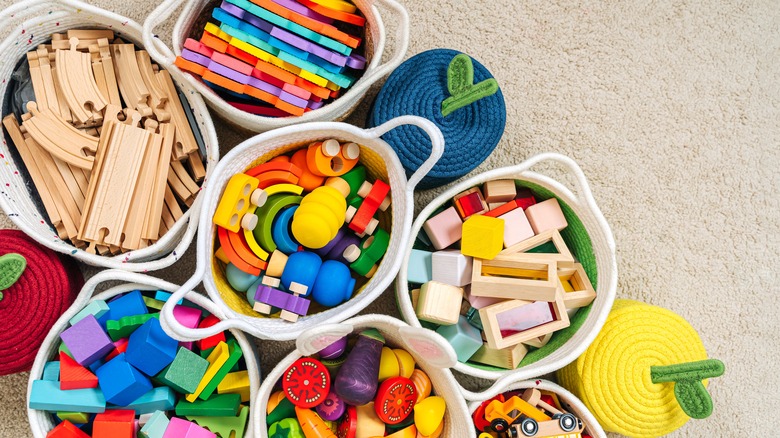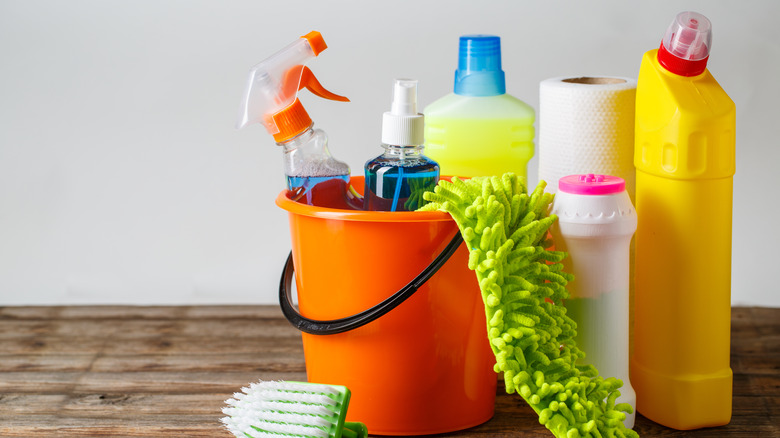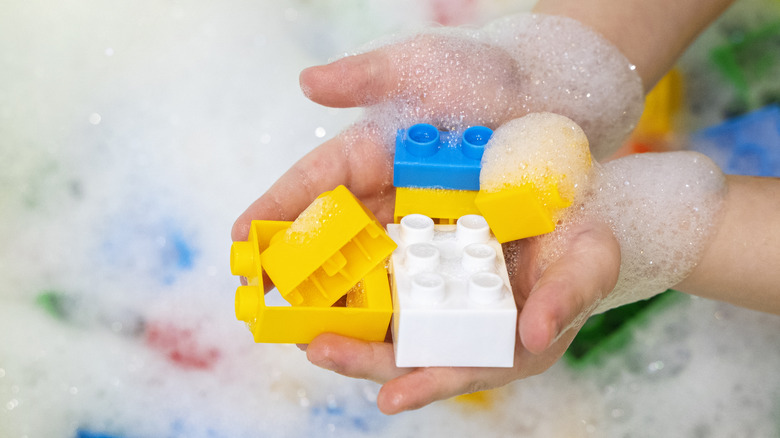Why You Should Think Twice Before Using Bleach To Clean Children's Toys
From plastic trucks and stuffed animals to noisy rattles and Lego blocks, your kid likely has a slew of toys littering their bedroom floor. After being stuck in their mouth and dragged around the playground, you'll likely be sneaking their well-worn favorites away for a good washing at some point.
As mentioned on Romper, experts explain that children's toys don't typically require routine cleaning, but there are times when it's necessary. For example, if play items are visibly soiled or your child is recovering from an illness, then it's recommended that you break out the cleaning supplies to eliminate germs and viruses.
Depending on the material, there are many ways you can go about cleaning and disinfecting your child's toys (via Molly Maid). Plush toys can usually be washed in the laundry machine, while plastic toys are often soaked in must-have household bleach. However, before you break out the bleach, it's important to know that this dangerous chemical can pose many risks to your child if used incorrectly.
What you should know about disinfecting toys with bleach
In addition to the harm bleach can cause the environment, the chemical disinfectant also poses risks to human health. Beyond Toxics explains that chlorine bleach isn't technically considered toxic, but that it can cause eye and lung irritation and external and internal tissue burn.
Because children are still developing, they are at higher risk of suffering lung damage from inhaled bleach vapors (per New Jersey Health). Bleach is rarely ingested in large enough quantities to typically be life-threatening, but it still poses a considerable danger to children (per BPAC). Knowing this, it's important to be mindful of how you are cleaning your children's toys. How to Adult mentions that bleach should always be heavily diluted if used to clean play items, using a ratio of 1.5 teaspoons of household bleach per gallon of water.
While some sources assert that any bleach residue will evaporate as the toy is drying, it's also a good idea to thoroughly rinse disinfected items to remove any remaining bleach (per Cleanipedia). Additionally, always make sure that bleach products are safely stored out of reach of children.
Other ways to safely clean and disinfect toys
If you'd rather not risk the potential dangers of chlorine bleach, then there are several toy-cleaning alternatives that you can check out. Vinegar is a more natural solution that can be mixed with water and sprayed on toys to disinfect them (per Molly Maid). Alcohol and peroxide are mentioned by Very Well Family as chemicals that can be safely used to disinfect play items, as well.
Plastic toys that are dishwasher safe can be cleaned in the dishwasher, as the detergent and hot water will effectively disinfect the items. Non-bleach disinfectant wipes, such as those from Lysol or Clorox, can also be used to sanitize toys too.
If you're looking for something that is confirmed safe for children, you might check out the baby aisle at your supermarket, as they typically contain cleaning items that are safe for babies. Overall, while cleaning your children's toys is important, you should also be mindful of how you are disinfecting items that they come in close contact with.


